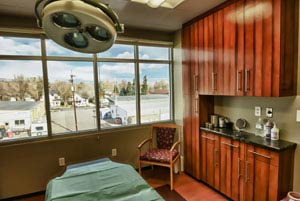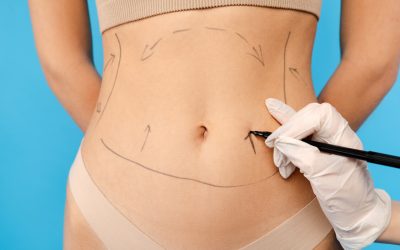Umbilical hernia surgery is a routine procedure that can significantly improve a patient’s quality of life by addressing discomfort and preventing complications. However, a successful recovery depends not just on the surgery itself, but on following proper post-operative guidelines, including knowing when it’s safe to resume everyday activities like driving. This article explores how soon you can safely get back behind the wheel after umbilical hernia surgery, providing clear insights and actionable advice to support your recovery journey.
The Initial Recovery Period After Umbilical Hernia Surgery
The initial recovery period following umbilical hernia surgery is a critical time for healing, as the body begins to adapt and repair itself after the procedure. During the first few days, it’s common to experience discomfort around the incision site, mild swelling, and fatigue. These symptoms are part of the natural healing process and typically resolve as the body recovers. Patients may also notice limitations in their mobility, as engaging the abdominal muscles can feel strained or uncomfortable. Rest is crucial during this phase to prevent unnecessary stress on the surgical area and to allow the incision to heal properly.
Pain management is another key aspect of early recovery. Surgeons may prescribe medications to control discomfort, but it’s important to note that certain painkillers, such as narcotics, can impair alertness and reaction times, making driving unsafe. Additionally, patients should monitor their incision site for any signs of infection, such as redness, increased swelling, or drainage, and contact their surgeon if these symptoms arise.
Gentle activities like walking around the house are encouraged to improve circulation and prevent blood clots. However, more strenuous activities, including lifting, bending, or twisting, should be avoided. Understanding these early recovery dynamics sets the foundation for determining when it is safe to return to activities like driving and ensures optimal surgical outcomes.
When Is It Safe to Resume Driving?
The decision to resume driving after umbilical hernia surgery depends on a combination of physical readiness, adherence to recovery guidelines, and individual healing progress. Most patients can typically return to driving within one to two weeks post-surgery, but this timeline varies based on factors such as the extent of the procedure and the patient’s overall health. One of the most critical considerations is pain management. If you are still taking narcotic pain medication, driving is not advised, as these medications can impair reaction times and judgment, increasing the risk of accidents.
Additionally, patients must be able to perform basic driving functions without discomfort or limitations. This includes the ability to turn the steering wheel, check blind spots, and make sudden movements, such as emergency braking. Any strain or pain in the abdominal area during these actions indicates that more recovery time is needed.
Surgeons also consider incision healing and the risk of complications. Driving too soon can place unnecessary pressure on the abdominal muscles, potentially delaying healing or leading to complications like hernia recurrence. It’s essential to consult your surgeon before getting back behind the wheel, as they can provide personalized advice based on your recovery progress. Listening to your body and allowing adequate healing time ensures that you can drive safely and comfortably once you resume this activity.
Potential Risks of Driving Too Soon
While the urge to regain independence is understandable, it’s crucial to ensure your body has had adequate time to heal before engaging in activities that involve core muscle engagement, quick reflexes, and prolonged sitting. Here are some of the key risks associated with resuming driving prematurely:
- Delayed Healing: The act of driving involves engaging the abdominal muscles, which can place unnecessary strain on your incision site, potentially delaying the healing process or causing complications.
- Hernia Recurrence: Excess pressure on the surgical site, especially from sudden movements like braking or turning, can increase the risk of hernia recurrence, undoing the benefits of the procedure.
- Reduced Reaction Times: If you’re taking narcotic pain medications, your ability to focus and react quickly in traffic may be impaired, posing a safety risk for both you and others.
- Discomfort and Fatigue: Sitting in a car for extended periods can exacerbate swelling or cause discomfort around the surgical area, making the experience unpleasant and potentially harmful.
- Increased Risk of Accidents: Pain or restricted movement can make it difficult to operate a vehicle safely, particularly during emergency maneuvers.
To avoid these risks, it’s essential to follow your surgeon’s guidance and only resume driving when you feel fully capable and confident in your abilities.
Tips for Resuming Driving Safely After Umbilical Hernia Surgery
Resuming driving after umbilical hernia surgery requires careful planning and attention to your physical readiness. Driving too soon can hinder your recovery or even pose risks, so it’s important to follow a thoughtful approach to ensure your safety and comfort. Here are some tips to help you get back behind the wheel safely:
- Consult Your Surgeon First: Always get clearance from your surgeon before resuming driving. They can assess your recovery progress and advise on whether it’s safe for you to drive.
- Ensure You’re Pain-Free: Make sure you can perform driving tasks like turning the steering wheel, checking mirrors, and braking without discomfort or strain. Pain-free mobility is key.
- Avoid Driving While on Medication: If you’re taking narcotic pain medications, do not drive, as these can impair your ability to react quickly and make sound decisions.
- Start With Short Trips: Begin with short, low-stress drives in familiar areas to test your readiness and assess your comfort level.
- Use Supportive Seating: Adjust your car seat to provide proper lumbar and abdominal support, reducing strain on your surgical area during the drive.
- Monitor Your Body’s Response: Pay attention to any signs of discomfort, swelling, or fatigue after driving, and give yourself additional rest if needed.
Following these tips ensures a safer and more gradual return to driving, aligning with your overall recovery plan.
Conclusion
Resuming driving after umbilical hernia surgery is an important milestone in your recovery, but it requires careful consideration of your physical readiness and adherence to post-operative guidelines. By understanding the healing process, recognizing the risks of driving too soon, and following your surgeon’s recommendations, you can ensure a safe and smooth return to your daily activities. If you have questions about your recovery or need personalized advice, visit us or call (303) 449-6666 to schedule your consultation today!





